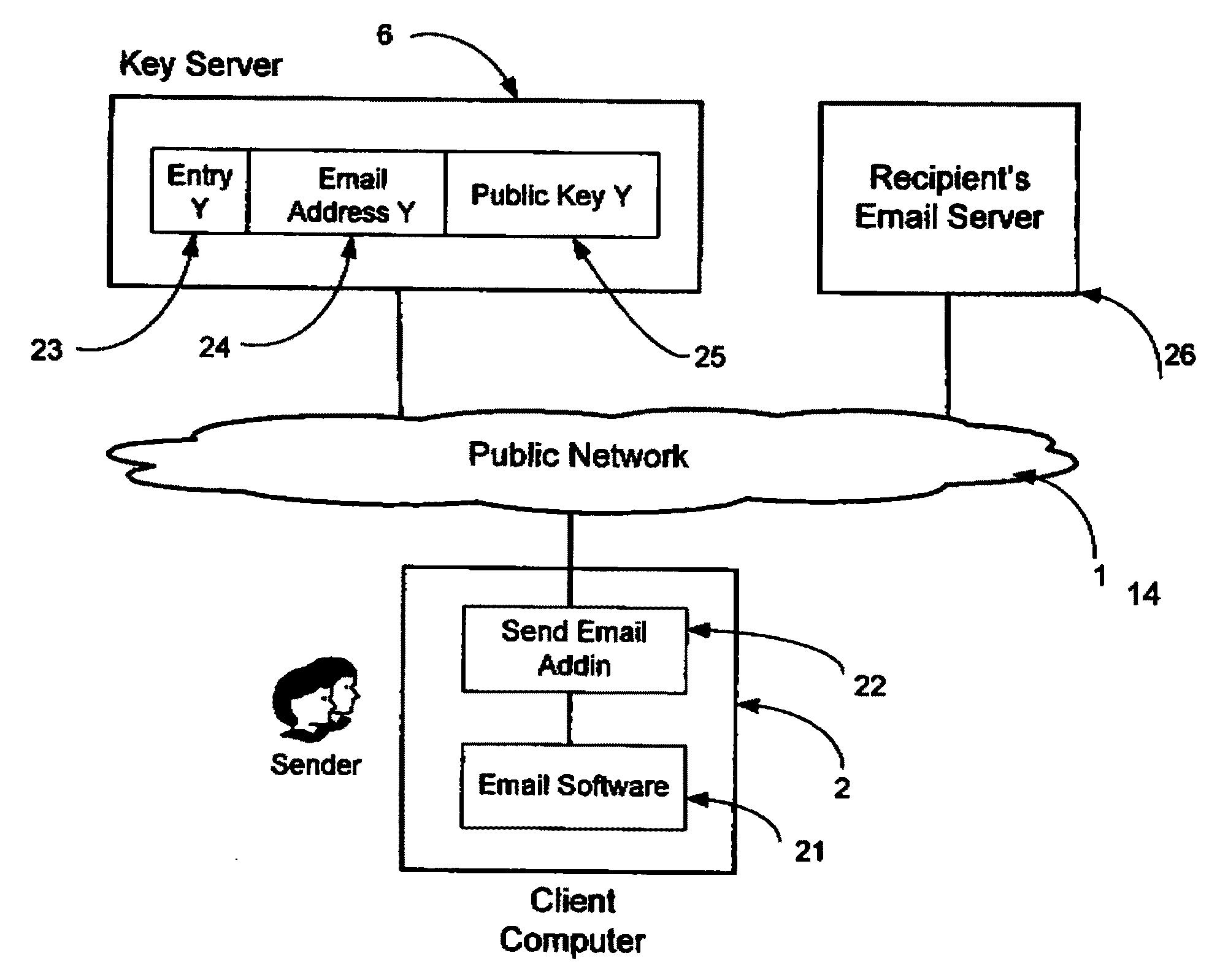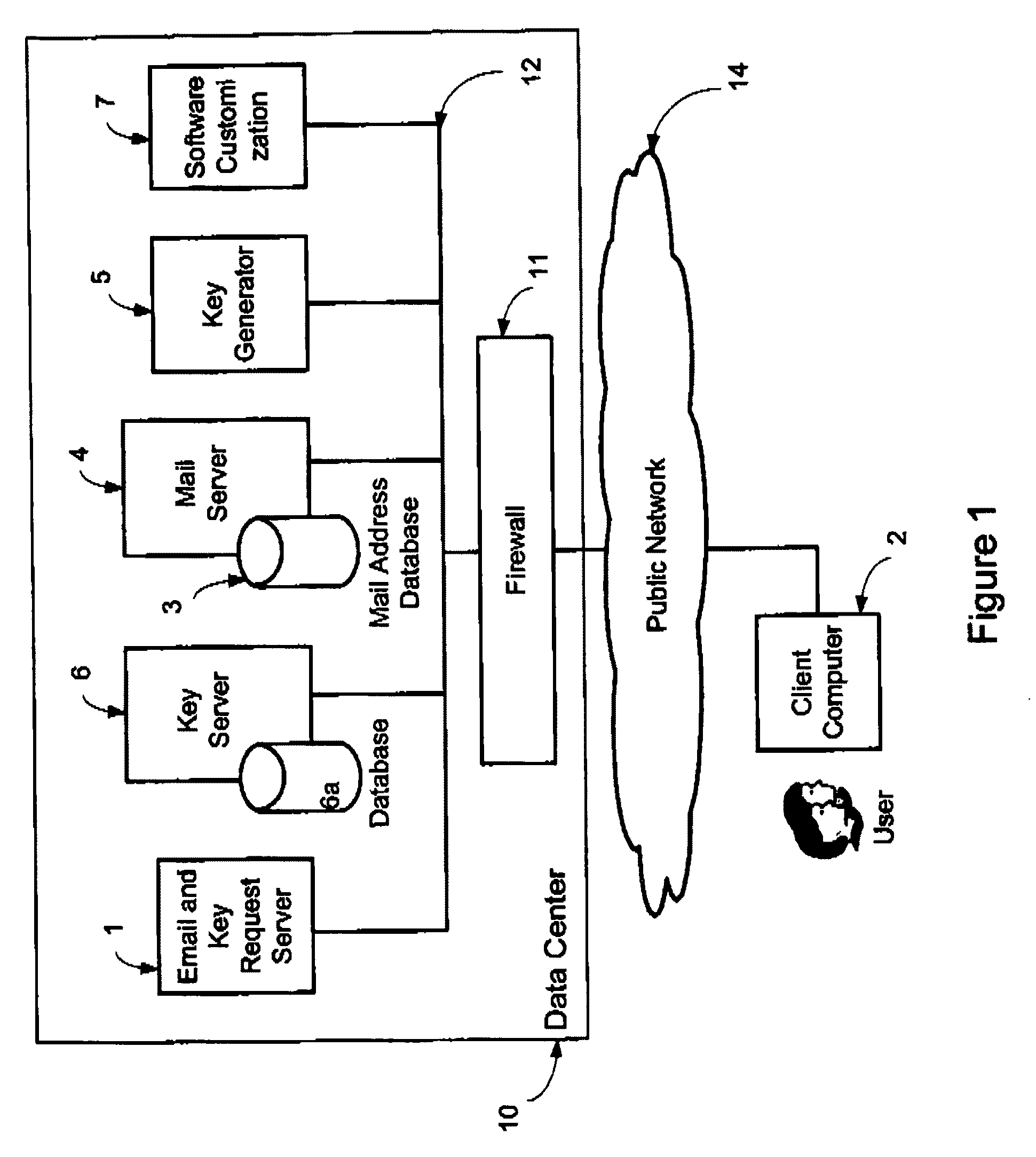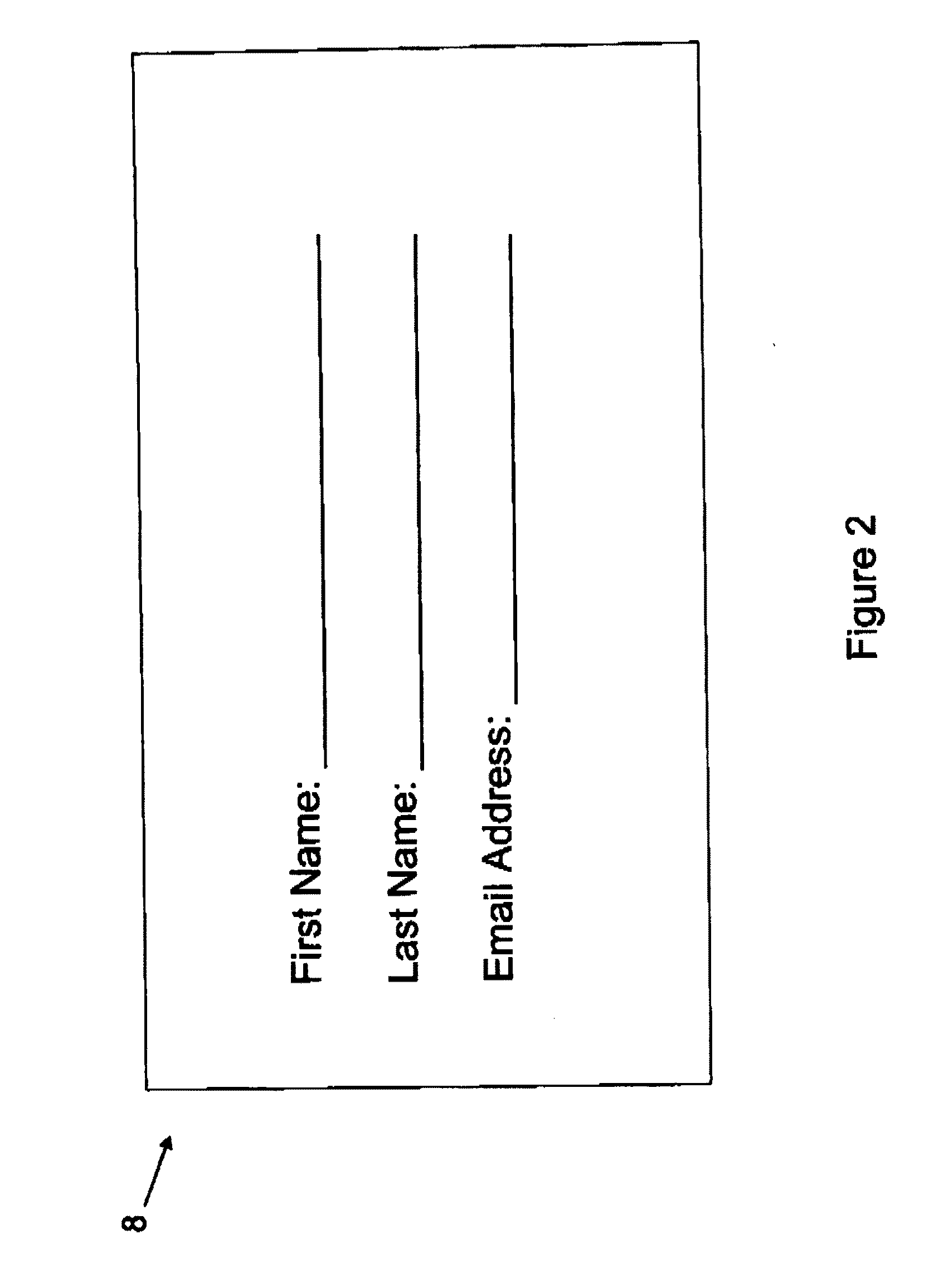Email uses a store-and-forward messaging system from sender to recipient that is difficult to control or even trace.
Internet security technologies, such as Secure Sockets Layer (SSL), that can be applied well to secure point to point transactions, such as used for
credit card transactions, or other
client-server communications, are not suitable for multi-hop communications, or to secure email communications that involve
store and forward messaging from a sender to a recipient across different network domains.
However, as described below, digital certificates are typically centrally managed by
Certificate Authorities (CA) and implementation of PKI systems is complex and costly.
For Enterprises, trying to create, distribute and maintain digital certificates for a large number of users may not be practical.
For example, considering these three aspects or “classifications” of encrypted email, in some instances, when message
confidentiality only is provided, an email may not be considered secure because it does not authenticate the sender and does not provide
message integrity.
Digitally signed email alone, for example, may not be considered secure email because, even though it authenticates the sender and provides
message integrity, digitally signed email does not provide message
confidentiality and does not authenticate the recipient Trust is important to any business relationship, and unless an email is digitally signed, recipients cannot trust the “From:” field in the email message.
A user wanting to receive secure email has to actively address a
Certificate Authority, and prove his identity to the
Certificate Authority, which typically involves costly and time-consuming procedures—e.g, physical travel, identification by postal services, to obtain a
certificate and public-private-key pair.
The effort involved with establishing the identity of a person or legal entity to obtain a
certificate, may not be considered necessary or desirable in many applications of email communication, and may deter many potential users.
Furthermore, unless sender and recipient both belong to an organization with a common PKI infrastructure,
interoperability of different systems may be an issue, and many steps have to be performed to enable potential senders to and recipients to exchange encrypted email
However, since PGP servers synchronize user level entries, this type of system is not believed to scale for billions of secure email usersAs an alternative to above, an LDAP (Light Weight
Directory Accessible Platform) central server could be used to store users' public certificates and be available to senders who want to send secure e-mail to the recipients, as presented in a paper “Using LDAP Directories for Management of PKI Processes” published in Proceedings of Public-key Infrastructure: First European PKI Workshop: Research and Applications, EuroPKI 2004, Volume 3093, Pages 126-134, June 2004.
However, this method is typically used in
intranet situation due to security
weakness in LDAP server, as presented in a paper “Deficiencies In LDAP When Used To Support Public-key Infrastructure” published in Communications of the ACM, Volume 46, Issue 3, Pages 99-104, March 2003.
This
distributed database system has the similar security problem as a LDAP server.When the sender has determined the recipient's public-key, the user stores the recipient's public-key in a file, and imports the recipient's public-key into the sender's
certificate store.
Thus although the use of X.509 certificates and PKI infrastructure can provide for message confidentiality, message integrity, and
authentication, ease of use and ease of deployment in
email security application remain a challenge.
Notably, even after years of development since PKI technology was introduced in the 1980 secure email based on X.509 certificates and PKI is still not a mainstream application today—either within corporations, or particularly among different corporations that entertain business-to-business (B2B) relationships where
interoperability of different systems remains an issue.
Consequently, at least for the above reasons, the adoption rate for inter-organizational secure email has been slow, and the majority of emails are still sent in the clear, leaving email subject to
eavesdropping, and making it more difficult to fight spam.
This approach has the limitations that because when a
user needs to read an e-mail, he has to log on to the central
encryption server to get bis private-key, and thus this approach to secure email system has limitations with respect to scaling for billions of secure email users.
This is useful in cases where pre-distribution of public and private-keys is inconvenient due to technical restraints.
This approach is not entirely satisfactory because the PKG must operate in a highly trusted manner, as it is capable of generating any user's private-key and may therefore decrypt messages without
authorization.
Thus, although there are known systems and methods providing message confidentiality, message integrity and
authentication for secure email, known systems have limitations or constraints to more widespread adoption, and / or are not readily scalable for large numbers of users.
Systems that provide a satisfactory level of security may be seen as onerous or inconvenient for typical individual email users, and may be considered more complex than a typical
user needs for many applications, or for inter-organizational communications.
 Login to View More
Login to View More  Login to View More
Login to View More 


